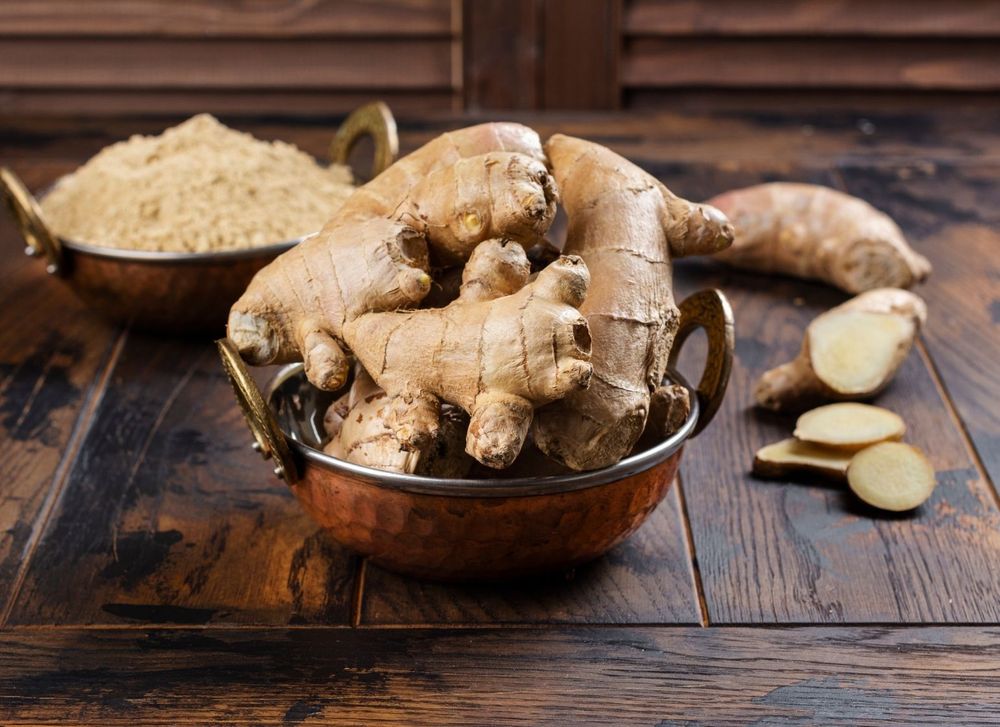Съдържание
Did you know that ginger helps with nausea? Nausea is one of the most common symptoms associated with various digestive disorders. It often precedes vomiting and stomach pain. Although these symptoms are not pleasant, nausea and vomiting function as defense mechanisms for the body as they help to remove toxins or substances that the body considers harmful.
Nausea is extremely common with more than 50% of adults reporting at least one episode of nausea and vomiting in the past 12 months. According to studies, women experience nausea three times more often than men. Interestingly, each person has a different threshold for tolerating nausea, which can vary even from day to day.
The physiological mechanisms that govern nausea involve the nervous system, specifically the autonomic nervous system, the gastric musculature, and the endocrine system. These mechanisms are activated when the body reacts to potentially harmful substances or situations. Possible causes of nausea include consumption of inappropriate or spoiled food, pregnancy, motion sickness, and others. The effects of various hormones can also contribute to the onset of nausea.
Controlling nausea can be achieved in many ways, including with pharmaceuticals and avoiding factors that trigger it. Medications such as antihistamines and antibiotics can be used depending on the cause of the nausea. In addition, you can manage nausea naturally with natural remedies such as ginger, for example.
What is ginger?
Ginger, scientifically known as Zingiber officinale, is an extremely popular spice that is used all over the world. This plant belongs to the turmeric family and is mainly used for its root, which contains various active ingredients, including gingerol, which has a number of physiological effects on the body.
The use of ginger has a long history that stretches back more than 5,000 years in traditional Indian and Chinese medicinal practices. The Roman Empire also noted significant use of ginger in various forms. The various forms of ginger include fresh, dried, powdered, candied and crystallized root. The flavour of ginger can vary depending on the time that has elapsed since it was harvested – the longer the time that has passed, the more spicy its flavour and aroma.
Ginger is known for its health benefits. Ginger root helps with symptoms of migraines, colds, arthritis, high blood pressure and nausea. Numerous studies have confirmed that ginger and its metabolites concentrate in the digestive system and have beneficial effects on gastric health. In addition, ginger possesses antioxidant properties, aids cell division and helps reduce inflammation levels in the body.
Why is ginger good for the stomach?
Ginger is extremely good for the stomach for several key reasons. Its most widely recognized benefit has to do with fighting nausea symptoms and preventing vomiting. Some scientific studies even highlight that ginger can be as effective as over-the-counter anti-nausea medications. The extract helps expel gas that builds up in the intestines, which can cause stomach upset.
Preclinical animal studies have further shown that ginger can protect the stomach from irritation caused by stomach acid and alcohol. The compound gingelsulfonic acid, which is contained in ginger, is responsible for this protective action. Further research has shown that ginger can stimulate gastric emptying and muscle contractions in the digestive system. This effect may alleviate the feeling of “too full” and bloating.
Ginger is also effective against “seasickness” as it inhibits serotonin receptors and has a direct effect on the gastrointestinal system and central nervous system. It is also known for its ability to prevent nausea and vomiting commonly associated with pregnancy.
How can I incorporate ginger into my routine?
Ginger comes in many different forms, so finding the right supplement to provide the benefits of this powerful herb is relatively easy.
Ginger essential oil
Essential oils are natural derivatives of aromatic plants. These compounds date back more than 1,500 years. The composition of essential oil depends on a variety of factors, including the method of extraction and the botanical source. Ginger essential oil works in a variety of ways, including as an aromatherapy agent. Essential oil aromas are often used as supportive therapy for a variety of conditions.
Studies surrounding the use of ginger essential oil and post-operative nausea have led to positive results. In one study, researchers observed the effect of using ginger essential oil and a placebo. During the month in which they collected data, they reported that inhaling ginger essential oil as a form of aromatherapy significantly reduced nausea and vomiting compared to placebo.
Ginger capsules
Ginger capsules are probably the most commonly used form of the extract. Encapsulation provides increased bioavailability of the active ingredients in ginger root. The coating of the capsule ensures controlled release into a specific part of the digestive system.
Studies examining the compatibility and effectiveness of ginger capsules in pregnant women are promising. One study looked at a group of women at 13-15 weeks of their pregnancy who suffered from nausea and vomiting. The results of this study showed that ginger was effective in reducing the number of times that women vomited and relieving the severity of their nausea.
Ginger tea
Ginger tea is used in traditional Chinese medicine to deal with stomach pain as well as various symptoms including nausea and vomiting. Often many symptoms are rooted in an increased inflammatory response in the body. This natural defense mechanism can disrupt normal physiological processes in the body, especially in the digestive tract.
Studies have shown that ginger tea lowers inflammatory responses and chemicals called cytokines in the body. This leads to better functioning of all organs and systems in the body, especially the gastrointestinal tract. Organic ginger concentrate is a great alternative as it can be added to a variety of beverages of your choice – tea, juice, smoothies, shakes and more.
Candy with ginger
Among the newest ways to deliver ginger are chewing gum or candy. These products provide a longer lasting spicy ginger taste. Studies have shown this form to be effective in managing symptoms of motion sickness or travel sickness.
Sources:
- Singh P, Yoon SS, Kuo B. Nausea: a review of pathophysiology and therapeutics. Therap Adv Gastroenterol. 2016;9(1):98-112. doi:10.1177/1756283X15618131
- Bode AM, Dong Z. Herbal Medicine: Biomolecular and Clinical Aspects. 2nd ed. CRC Press Taylor & Francis. 2011.
- Chaiyakunapruk N, Kitikannakorn N, Nathisuwan S, Leeprakobboon K, Leelasettagool C. The efficacy of ginger for the prevention of postoperative nausea and vomiting: a meta-analysis. Am J Obstet Gynecol. 2006;194(1):95-99. doi:10.1016/j.ajog.2005.06.046
- Yoshikawa M, Hatakeyama S, Taniguchi K, Matuda H, Yamahara J. 6-Gingesulfonic acid, a new anti-ulcer principle, and gingerglycolipids A, B, and C, three new monoacyldigalactosylglycerols, from zingiberis rhizoma originating in Taiwan. Chem Pharm Bull (Tokyo). 1992;40(8):2239-2241. doi:10.1248/cpb.40.2239
- Wu KL, Rayner CK, Chuah SK, et al. Effects of ginger on gastric emptying and motility in healthy humans. Eur J Gastroenterol Hepatol. 2008;20(5):436-440. doi:10.1097/MEG.0b013e3282f4b224
- Mowrey DB, Clayson DE. Motion sickness, ginger, and psychophysics. Lancet. 1982;1(8273):655-657. doi:10.1016/s0140-6736(82)92205-x
- White B. Ginger: an overview. Am Fam Physician. 2007;75(11):1689-1691.
- Firenzuoli F, Jaitak V, Horvath G, Bassolé IH, Setzer WN, Gori L. Essential oils: new perspectives in human health and wellness. Evid Based Complement Alternat Med. 2014;2014:467363. doi:10.1155/2014/467363
- Lee YR, Shin HS. Effectiveness of Ginger Essential Oil on Postoperative Nausea and Vomiting in Abdominal Surgery Patients. J Altern Complement Med. 2017;23(3):196-200. doi:10.1089/acm.2015.0328
- Grgić J, Šelo G, Planinić M, Tišma M, Bucić-Kojić A. Role of the Encapsulation in Bioavailability of Phenolic Compounds. Antioxidants (Basel). 2020;9(10):923. Published 2020 Sep 26. doi:10.3390/antiox9100923

